A healthy monstera plant displays characteristic large, glossy, deep green leaves with signature split leaf fenestrations. Ensuring your monstera thrives rather than merely survives requires recognizing and responding promptly to signs of suboptimal health. This definitive guide explores what to look for in a vigorous monstera at every stage.
Leaves as the window to monstera health
The monstera’s iconic leaves provide critical visual cues to its overall wellbeing. Pay close attention for changes in color, texture, tears or spots as early indicators that conditions need adjusting before lasting damage occurs.
Leaf color communicates light intake
- Vibrant green signifies appropriate light exposure
- Yellowing warns light levels are too low
- Paleness or washed out color indicates too much light
The monstera leaf’s rich Kelly green emerges from sufficient but not excessive diffuse bright light. Even some direct sun is tolerated if introduced gradually.
Lower or inner leaves turn pale yellow or lime when light is insufficient. This reduces photosynthesis and nutrition production. Without quick intervention, chlorosis spreads up the plant. Supplement or relocate lighting immediately once fading becomes noticeable.
Though surprisingly adaptable, too much direct hot sunlight causes monstera leaves to bleach to a pale green or yellow washed out appearance. New leaf damage may precede older leaves showing symptoms. Filter or diffuse intense light or move the monstera to bright shade.

Leaf texture reflects humidity happiness
- Smooth, stiff and upright means its comfortable
- Limp, drooping leaves demand higher humidity
The monstera thrives in indoor conditions mimicking its native humid jungle habitat. When warm indoor air closely matches its preferred 60% or up humidity levels, monstera leaves feel thick, stiff and self-supporting. The plant appears happy and healthy.
If the air grows too dry, monstera leaves lose turgidity and flop down limply from the stems instead standing tall. Boost ambient humidity or mist frequently. Use pebble trays or humidity domes to prevent escalation to leaf browning and lower leaf drop.
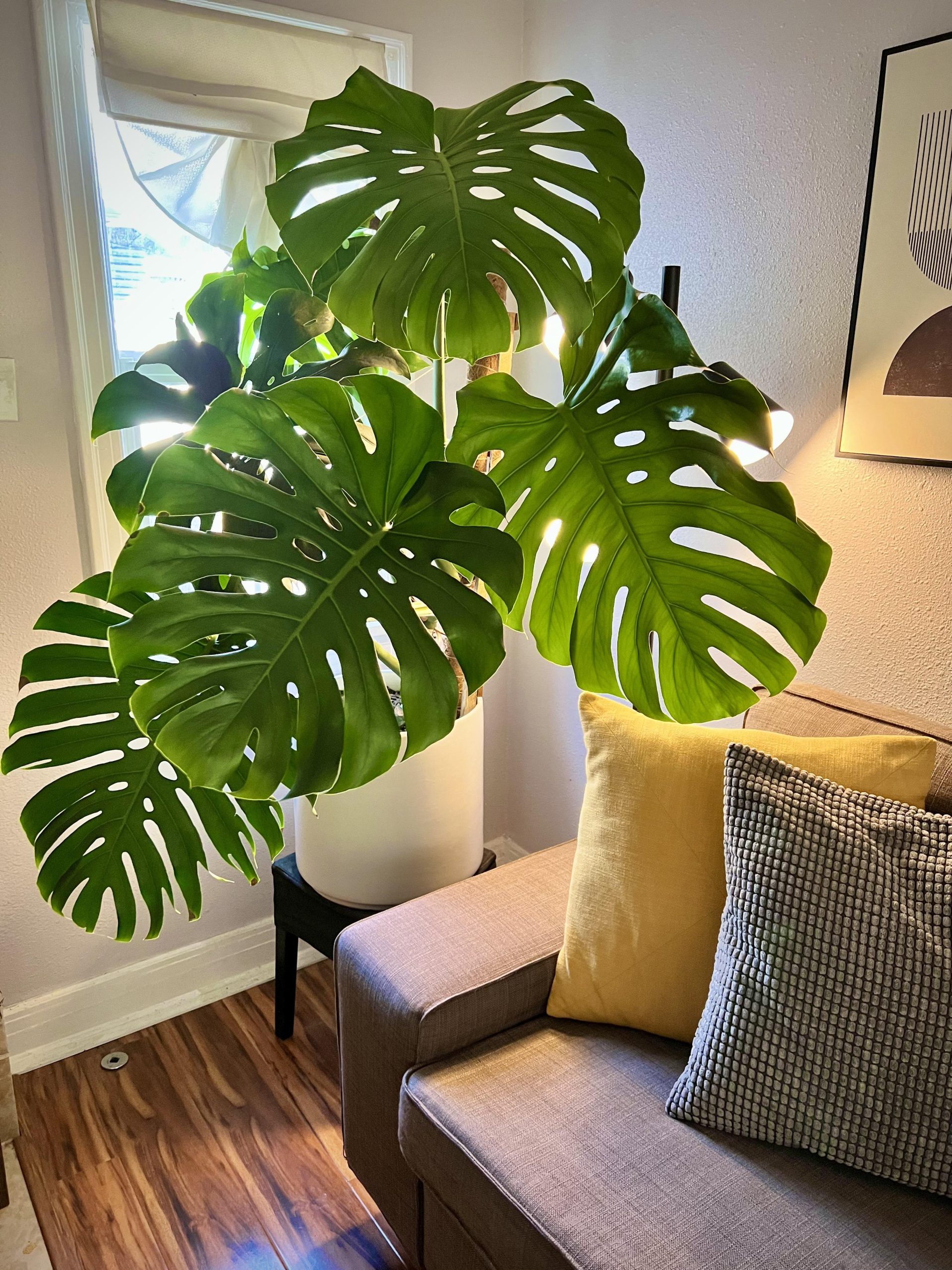
Holes signal maturity in older leaves
- No fenestrations means more maturity ahead
- Smaller splits developing signify growth
- Large iconic cuts indicate peak leaf landmarks
The monstera’s distinctive fenestrated foliage emerges only with age and maturity. So lack holes in a young or recently repotted plant is normal. Its genetics steadily split older leaves from tiny slits progressively enlarging over subsequent leaves to the wide iconic cuts outs.
While lower leaf drop later enables energy to support upper growth, premature loss leaves noticeable gaps. Yellow lower leaves then brown edges signify inadequate conditions. Troubleshoot water, light and nutrition balance to restore a vibrant leaf canopy.
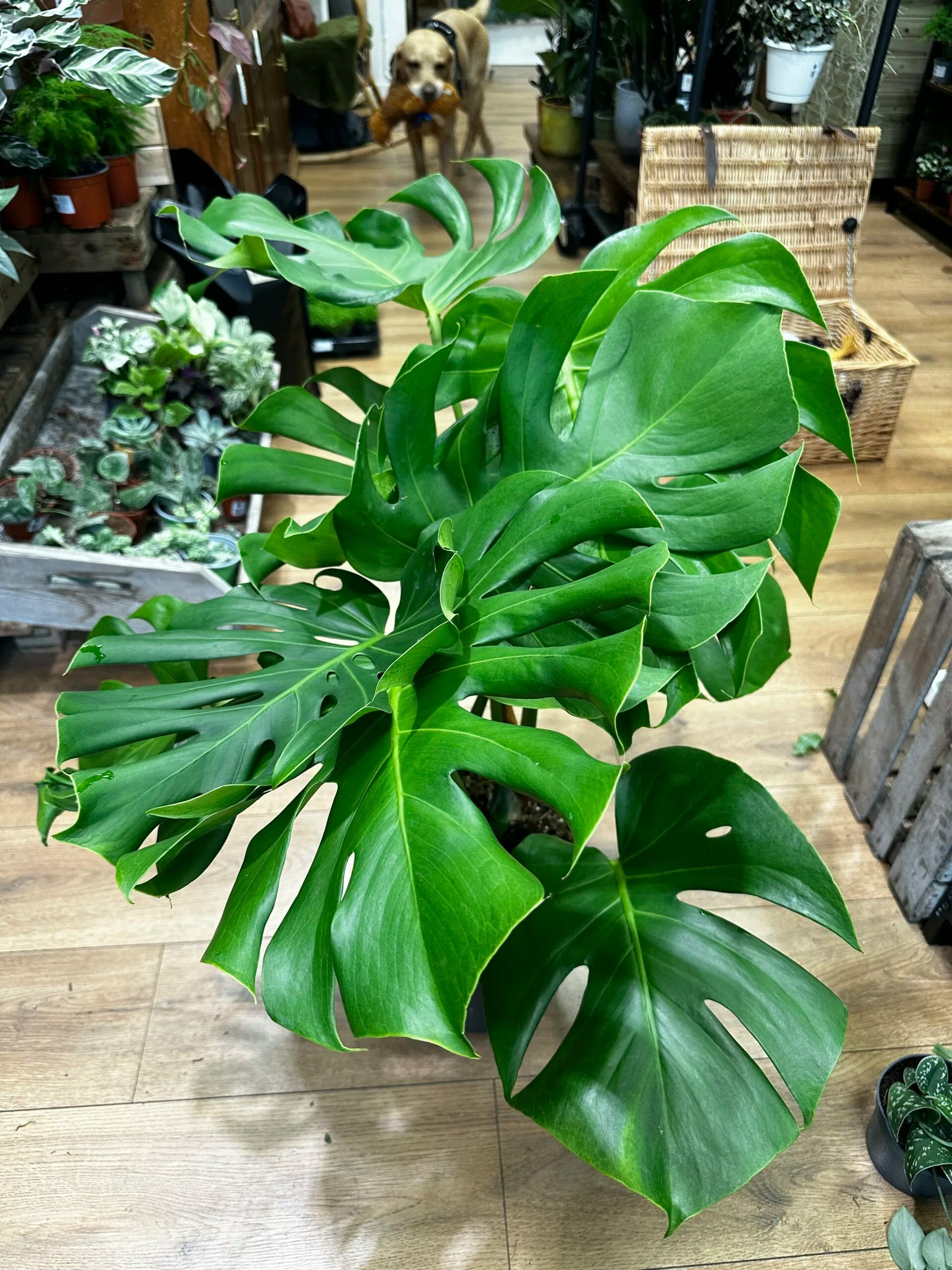
Explore our range of stunning Monstera Variegated varieties here
Stems and new growth track watering needs
The monstera’s sprawling aerial roots and erect stem also provide important visual feedback on its hydration health. Monitor these indicators to ensure appropriately moist (but not sodden) soil.
Aerial roots seek moisture support
- Roots branching out show dehydration
- Aerial roots suggest adjusting its environment
Lacking such visible clues as leaf droop, monstera aerial roots emerging on climbing stems alert possible underwatering due to evaporation from pot sides and tops. This is the plant’s effort to harvest atmospheric humidity.
Ensure the soil stays evenly moist about 2 inches down without prolonged drying. Consider potting up with added bark and moss to retain moisture longer or use a humidity dome to reduce transpiration and suppresses root branching signaling dehydration.
Firm stem equals hydration success
- Soft, weak stems indicate inadequate water
- Strong upright stems confirm sufficient moisture
In addition to droopy leaves, a truly thirsty monstera develops soft, limp stems unable to support the weight of the heavy foliage. Stems lay over appearing thin and weak. This is a surefire sign soil has dried out for too long.
Correct immediately by thoroughly watering until it drains freely from the drainage holes. Reset a routine watering schedule to prevent repeats before permanent damage occurs. The stem soon regains strong rigidity able to stand tall again.
Where to buy monstera? Benefits from importing plants from Thailand
- Shipping: Door to door shipping, fast and safe with Dragon Courier
- Biodiversity: Thailand is known for its rich biodiversity, including a wide variety of aroid species. This diversity allows importers to access a broad range of unique and exotic aroid plants.
- Quality and Health of Plants: The suitable climate helps the plants grown here stay healthy and of high quality.
- Cost-Effectiveness: Due to favorable growing conditions and efficient production methods, Thai aroid plants can often be more cost-effective compared to those from other countries.
- Access to Hybrid Varieties: Thai growers are often involved in the development of new hybrid aroid varieties, offering unique plants that may not be available from other sources.
Monstera species are the most sought after by aroid plant lovers
What’s happening below: reading roots and pests
While leaves, stems and aerial roots provide the most obvious visual monstera health indicators, important clues also exist below the soil surface. Monitor monstera roots and pests to enable early interventions for suboptimal conditions.
Healthy roots remain plump and white-tipped
- Firm white root tips signal active growth
- Brown soft roots indicate possible trouble
- Circling roots require more space
Ideally repot annually in early springtime before active growth resumes. This provides the opportunity to assess monstera root health as you refresh some soil. Move up just one pot size to avoid shocking the plant.
Seek clean whitish plump root tips radiating through the soil as confirmation all is well below ground too. Avoid overwatering muddy extremes leaving them susceptible to root rot. But brown softened roots suggest excess dryness or inadequate nutrition instead.
Watch for early signs of sap sucking pests
- Sticky sap attract sooty mold fungus
- Chewed or curled leaves indicate mites
- White bits under leaves are mealybugs
Monsteras have few serious insect threats, but sap sucking pests can attack if conditions encourage infestations. Sticky sugary sap secretions called honeydew allow black sooty mold footholds.
Watch for leaves yellowing or browning unevenly or developing curls while tiny spider mites spin hidden webs. Mealybugs gather as white cottony masses on leaf undersides. Isolate and treat using insecticidal soap spraying both sides of leaves to suffocate adults while halting egg laying cycles.

When problems persist: signs of lasting damage
Catching subtle monstera stress signals early prevents lasting harm. But without intervention, eventually clear impacts emerge ranging from leaf markings to defoliation. Don’t despair – even plants with significant damage can often recovery over time.
Spotting and holes signal serious moisture issues
- Small brown spots indicate inconsistent watering
- Large marks display prolonged saturation
- Holes surrounded by yellowing show overwatering response
Perfectly uniform soil moisture is unrealistic long term. But extended peaks and valleys take a toll on monstera health. Focused small brown spots with distinct edges demonstrate brief moisture extremes dried out then soaked excessively.
Larger more diffuse markings result from protracted overly wet roots unable to uptake nutrients. If mold, softened stems or downward leaf curling accompanies such saturated conditions, chronic root rot may already be established and spreading.
Sometimes overwatering paradoxically displays as older leaves yellowing concentrating around jagged leaf loss akin to mechanical damage. This transpires as the plant jettisons foliage to reduce water demands and limit the hazard.

Wilting and defoliation warn of ailing roots
- Wilt despite moist soil reflects diseased roots
- Lower leaves dropping before replacements unfurl
Leaf curling and loss in a routinely hydrated monstera signals blocked water and nutrient uptake through compromised roots not effectively moving moisture internally. Diverse pathogens cause root and stem base rot compromising vascular flows throughout the plant regardless straddling extremes.
While natural lower leaf drop over time concentrates energy and growth upwards, premature loss exceeding new leaf generation indicates ailing roots often infected by water mold fungi. Eventually defoliation and dead stems follow with the plant unable to sustain itself or defend against pathogens.
Conclusion: what does a thriving monstera display?
In a nutshell, a vigorous happy monstera shows:
- Glossy waxy stiff deep green leaves with signature fenestrations in older foliage
- Bright white plump root tips with no mushiness or unusual odors
- Consistently moderately moist soil without extremes drying out completely or staying saturated
- Good hydration visible through aerial roots only from humidity not dehydration along with firm upright stems
- No soggy leaves, brown spots larger than a pinhead or rapid multiple leaf loss
- No visible sap sucking insects like spider mites or mealybugs
Follow these indicators to recognize needs for more light, water or humidity before lasting harm develops. Then implement adjustments aiming for as close to the monstera’s native moist jungle conditions as indoor environments can support. Fine tune care over time as you learn your plant’s unique rhythms and responses. A healthy vibrant monstera provides years of enjoyment watching unfurling leaves steadily develop iconic splits.
FAQ
- What are the signs of a healthy Monstera plant?
- A healthy Monstera plant typically has glossy, vibrant green leaves with no browning, yellowing, or spots. Its stems should be sturdy, and it should display steady growth.
- How often should I water my Monstera to keep it healthy?
- The watering frequency for a Monstera plant depends on factors like humidity and light. Generally, it’s best to water when the top inch of soil feels dry, usually every 1-2 weeks.
- What kind of lighting does a healthy Monstera require?
- Monstera plants thrive in bright, indirect light. They should not be exposed to direct sunlight, which can scorch their leaves, or very low light, which can slow their growth.
- How can I promote healthy growth in my Monstera plant?
- To encourage healthy growth, ensure your Monstera has the right conditions, including proper lighting and humidity. Regularly prune to remove dead or yellowing leaves and consider repotting when it outgrows its pot.
- What should I do if my Monstera starts showing signs of illness or distress?
- If your Monstera develops issues like yellowing leaves, drooping, or pests, investigate the cause. Adjust watering, lighting, and humidity accordingly, and treat any pests promptly with appropriate measures.
See more What are monstera plants good for?

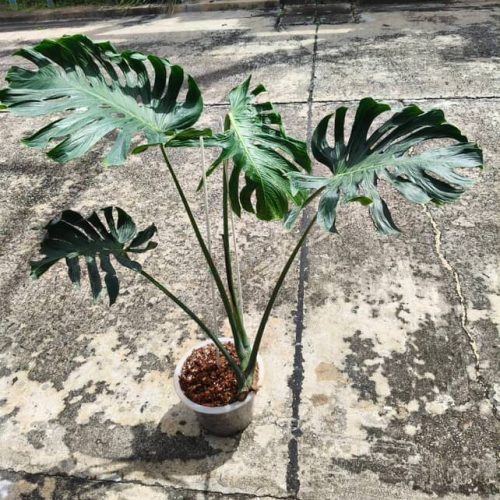
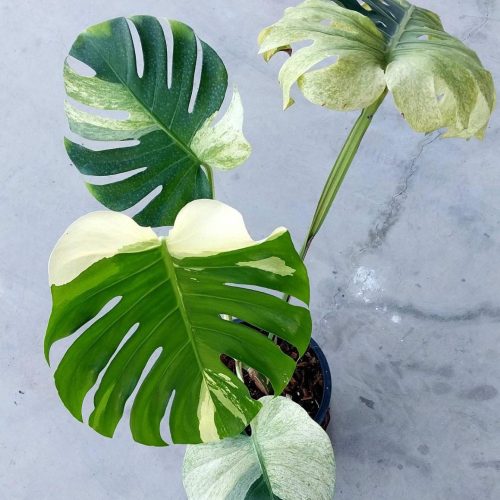



![12x Monstera Borsigiana Albo half leaves variegata [3-4 leaves]](https://greenboog.com/wp-content/uploads/2024/10/Monstera-Borsigiana-Albo-half-leaves-variegata-1-500x500.jpg)
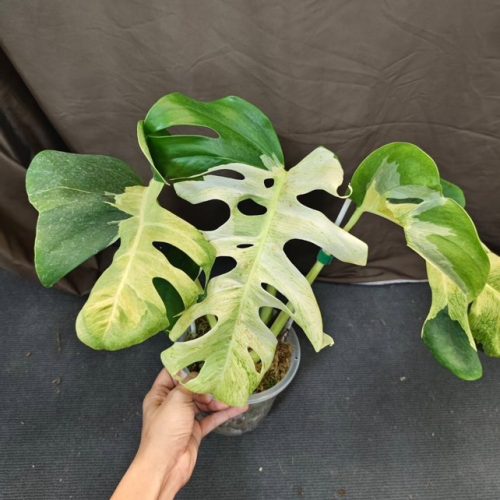

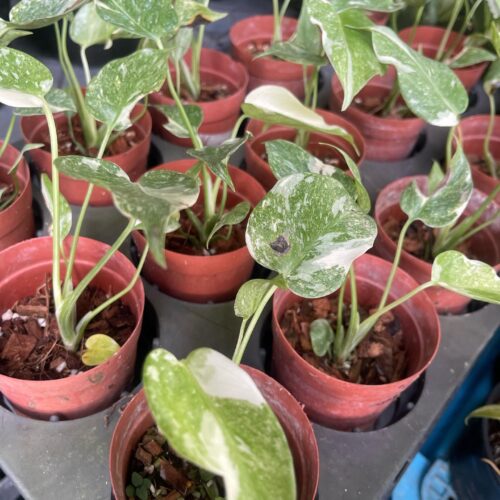
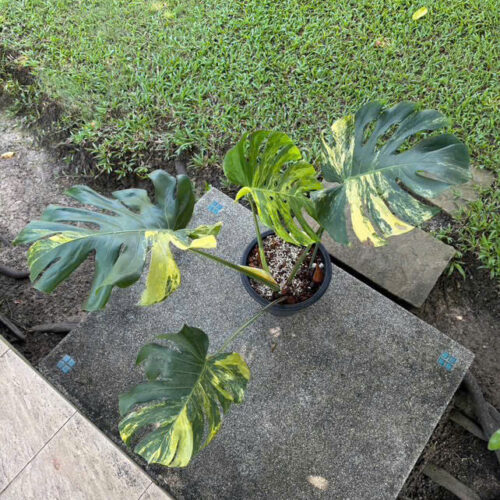
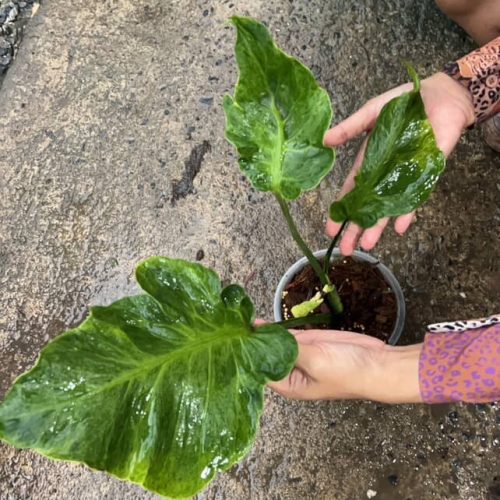
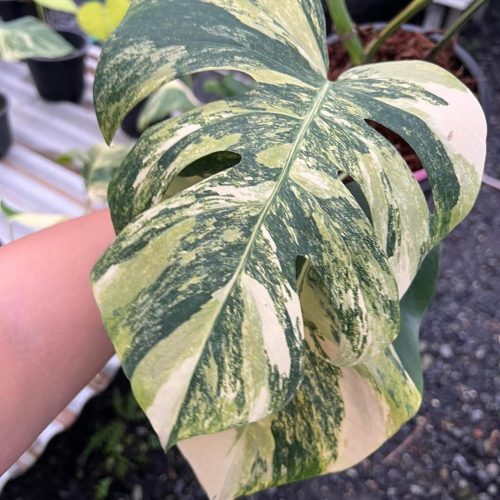

![10 Pots x Monstera Aurea Variegated / Mix Aurea tri color 3-4 leaves [well variegated]](https://greenboog.com/wp-content/uploads/2024/08/Monstera-Aurea-Tri-color-500x500.jpg)

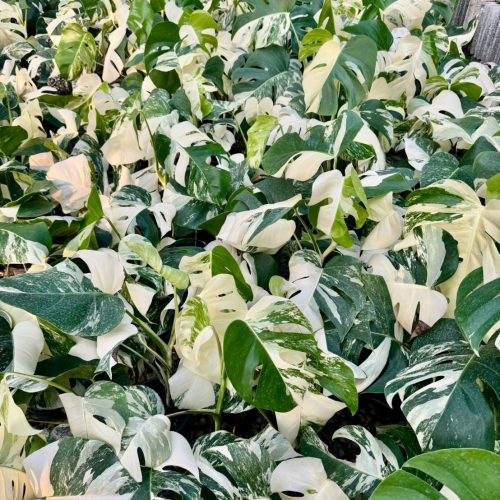
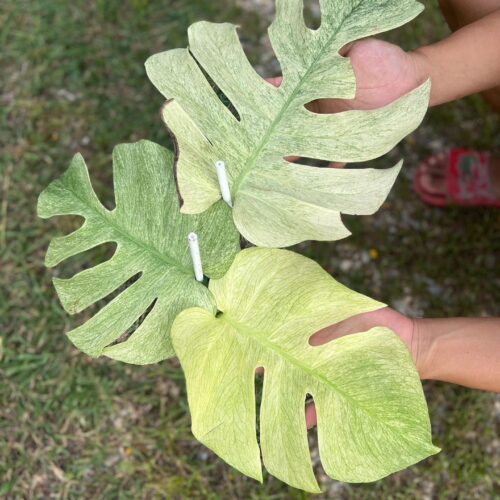
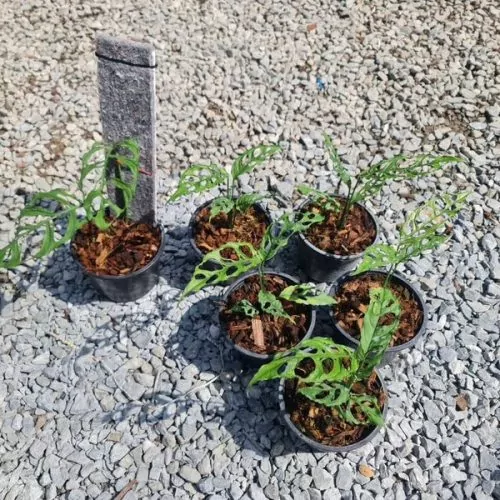
![[SALE] 10 Pots x Monstera Aurea Variegated 3-6 leaves [Medium size]](https://greenboog.com/wp-content/uploads/2025/01/Monstera-Aurea-variegated-4-6-leafs-500x482.jpg)


1 thought on “What Does A Healthy Monstera Plant Look Like”